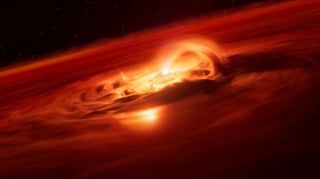Particle.news
Habitability Planetary Systems Planetary Formation Detection Methods Planet Formation Planetary Science Atmospheric Studies Gas Giants Planetary Characteristics K2-18b

High‑pressure tests produced water at the hydrogen–magma boundary to challenge migration-based explanations for wet close‑in worlds.


















